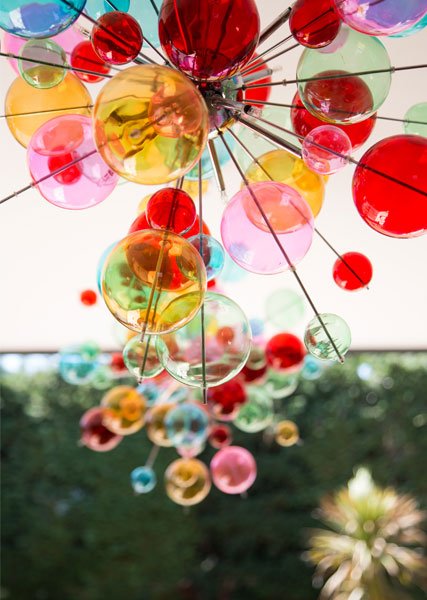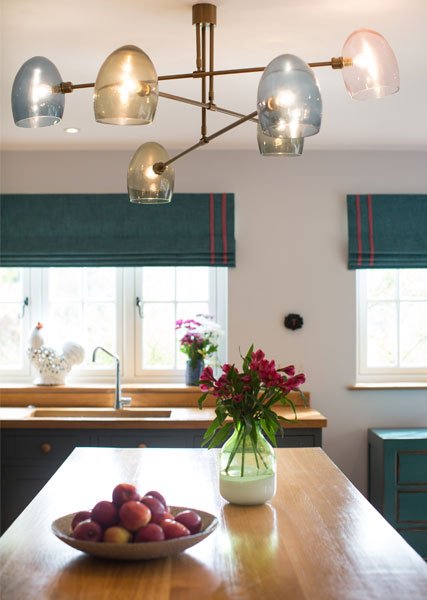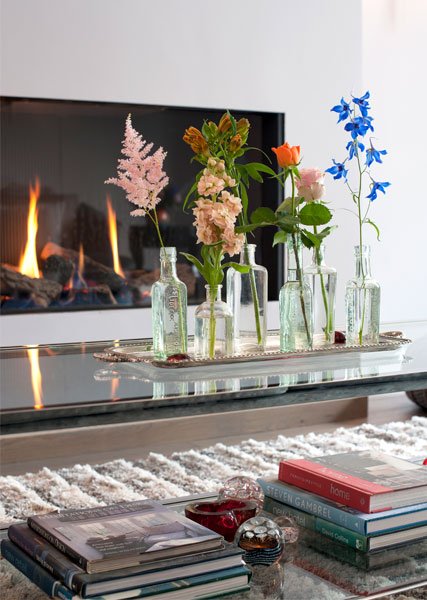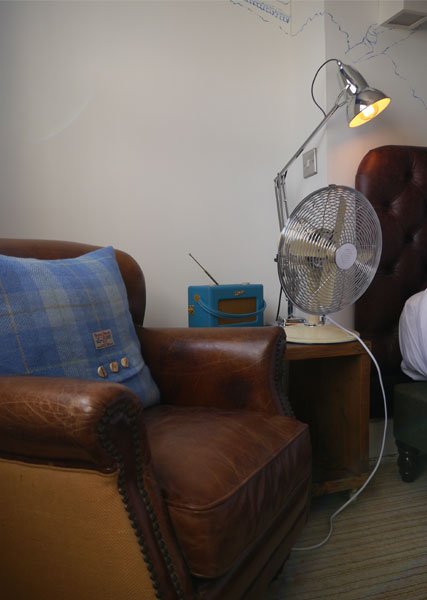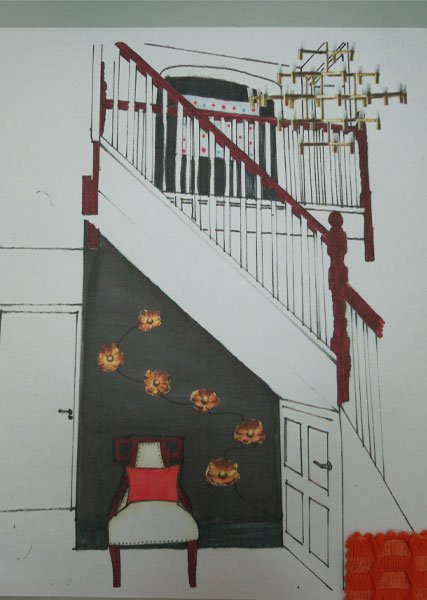Comfort in Design - What you need to consider
Comfort. We all know what makes us comfortable, right?
It’s the squish in a sofa, the snuggle in a blanket, the “arhh” when we climb into bed. However, we don’t really think about everything that makes us comfortable, after all when you are comfortable you are normally concentrating on other things. Its only when you are uncomfortable that you become aware of what you would like to change to put you in your happy place.
We humans need a lot more from our rooms to make us comfortable than the foam and feather mix in our favourite chair. Our bodies and minds subconsciously look for lots of different factors to be able to relax, calm and settle. So what are they and how do you create a cosy design?
Ergonomics
Ergonomics is one of the grounding principles of interior design but what exactly is it? Well it is the process of creating spaces or things that “fit” the people who use them. The reason that the seat height in most chairs is 45cm is that this is distance between the back of the knee and the feet on an average person, so you can sit in a chair with your feet on the floor.
Most things come with the ergonomics designed in, like your sofa or dining room table height, but you need to consider them when putting together the layout of your room. You won’t be comfortable if there is no room to stretch your legs between the front of a sofa and the coffee table, but it also won’t be convenient to have to stretch too far to put your cup down.
One big thing to take into account is “sight lines”, especially to the TV. If your TV is mounted too high then you will have to tilt your head up to watch it. If your TV is on an angle from the seating then you will have to twist to watch it. Maybe not an issue once or twice but if your body is being contorted night after night you might begin to feel that in your shoulders and back before long.
If you analyse every way a human uses a space and create your layout to compliment it then this will be a comfortable space to use.
Lighting
The classic interrogation scene in film leads with the interrogator shining a glaring light in the face of prisoner. Ouch! Too much light hurts your eyes, too little strains them. Lighting is a huge part of designing a room for comfort, So how do you get it right?
Firstly, you will need different amounts of light in each room to meet the needs of the tasks being done in them. In other words you will need more light in a kitchen and office than in a bedroom. I’m also a big fan of layering your light so you can create zones or go from a bright room to a mellow room with a few adjustments on your switches. If you want to know how to build a great lighting scheme and what different types of lights you need, then check out the blog post we did a few years ago. Or, the amazing Mary Middleton from Hello Peagreen wrote a fab post Lighting 101 with everything you could possibly want to know about it.
Thermal
How on earth can you be comfortable if you are too hot or too cold? Well you just can’t.
Being at Optimal thermal comfort in offices has been shown to maximise productivity and decrease typing errors. A good heating system is a must and a fire is a plus. Windows can be a big factor in the temperature of your room, it can be a great idea to thermal line your curtains so they act to shield the room from the cold coming through the glass. If you have rattling sash windows then getting draft excluders installed will cut that down. I also keep throws to hand for when you just have that slight chill and want to snuggle up.
For baking hot summer days obviously air conditioning is the best, but very few homes in the UK have it as the cost to install compared to the quantity of days required means it rarely goes on the shopping list. The thicker your walls then the cooler your home will remain during the heat of the day and keep curtains shut during the heat of the day, I know it’s not very friendly but you will be grateful when it comes to the evening.
Bedding plays a lot with your thermal comfort, keep it natural fibre so it can breathe and doesn’t become clammy. I’m also a big fan of layering so you can always throw stuff off or pull things on to get the temperature just right for you.
Acoustics
Noise can also hurt and you should take into account your acoustics when designing a space. If everything is a hard surface, as in bathrooms and kitchens then you can find you get that “tinny” sharp noise which is slightly uncomfortable to sit in, as sound bounces off everything. The more people using that spaces the more painful the noise – think school canteen. Every room should have different types of textures in them, not only does this soften the acoustics but also the feeling of a room. Curtains, upholstery and canvased art work all drink up the noise instead of reflecting it back at you.
Security
I consider two things that contribute to making us feel secure in a space.
One is our physical security. Our homes are places we should feel the safest in the world. Beyond thinking about the safety of your neighbourhood or the excellence of your burglar alarm, our bodies are design to feel more protected in certain positions than others. We like to have our backs protected, that’s why we all prefer to sit in the chair against the wall in a restaurant instead of the one the other side. Don’t design stuff that has your back to an open door, it can make you feel very vulnerable. Feng Shui talks about how the power position in an office is having your desk facing the door but being slightly to the side, this way you can see exactly who is walking in without staring off down the corridor.
Secondly is financial security. You say “what???” How can an interior design blog talk about financial security? Being stressed about money can take its toll on us physically. We live in a buy now, pay later world where we see something and two seconds later we can have it flying towards our homes. However when you design you home don’t do so at the cost of your financial security. So you might have to wait a few months and save up for the rug. Better that then feel physically ill every time you look at it wondering when you can pay off the HP and how will you pay your mortgage next month. Spend only what you can afford, invest in items that will last a lifetime and save up for the stuff you want. That will be a more “comfortable” position to be in.
Clutter
Yes I’m here again, yelling about clutter. But ask yourself “Can you really ever get comfortable if you are surrounded by a mess?” It has been proved that clutter is a stressor leading to a spike in our cortisol levels. Once I found this out I found I was much more ruthless with getting rid of stuff I just didn’t need or like. There can be two types of clutter in a home, a cluttered design where there is just a lot of stuff going on in a room and also the normal type of clutter that is stuff that just doesn’t have a home. If you find yourself getting wound up by it or not wanting to have friends over because you are embarrassed by it, maybe it’s time to tackle it.
Smell
Smell is one of the five senses and we react quite heavily to it, sparking feelings or joy or disgust mattering on what we have caught whiff of. This is technically called “Olfactory Comfort.” If your house smells bad it can be physically undisruptive to be in and can also trigger eye, nose and throat irritations, nausea and headaches. None of that sounds very comfortable to be in. I address how we can design to cut Air Pollution in our Homes in an early blog and the same principles in this will help to keep a fresh smelling home.
Personality
Your home is about you! It should have your personality, taste and memories in it. If it becomes an environment that’s about anything else you won’t feel settled there. So decorate it load and proud and make it a statement about YOU.
Now doesn’t that feel a whole heap more comfortable?



